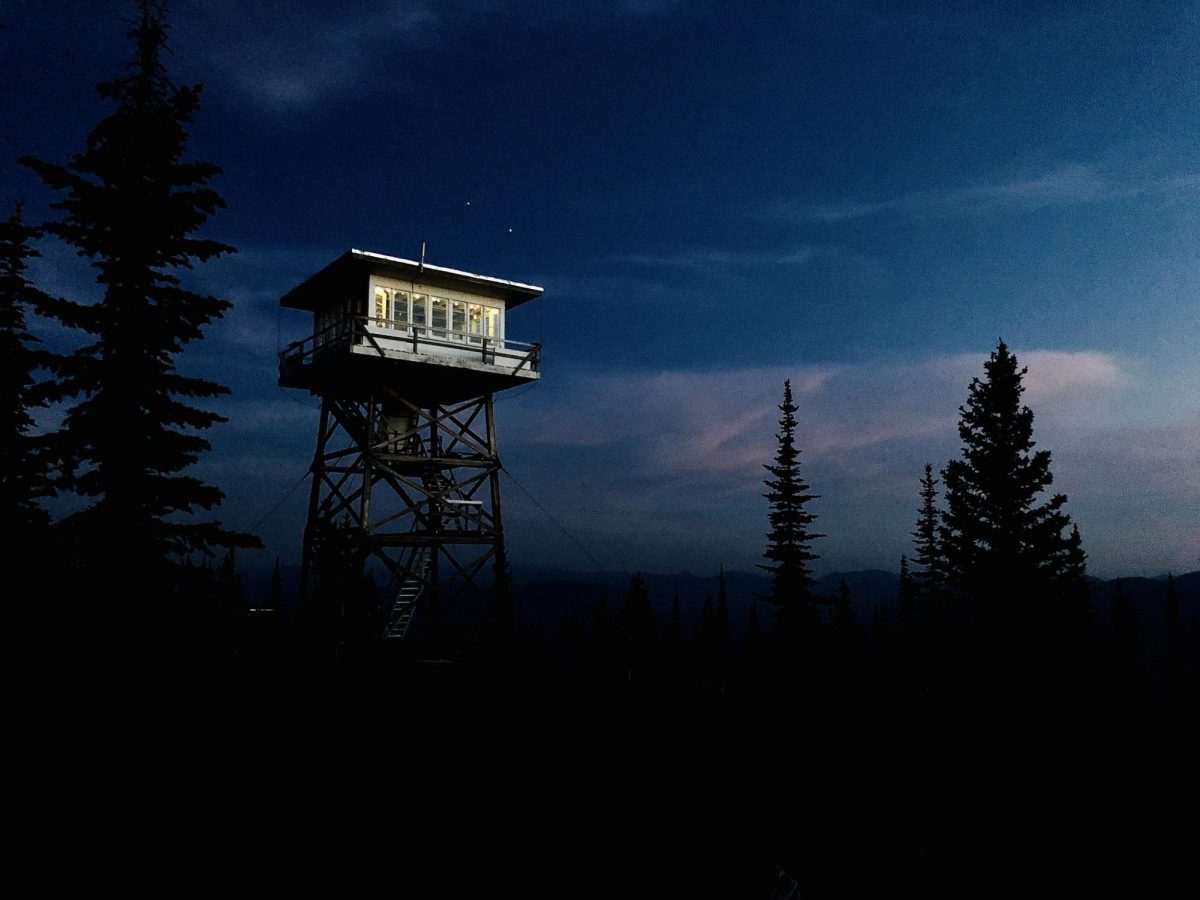The white minivan is very far from home. It lives day-to-day in the world of pavement and people. The world where the constant roar of highways never leaves it lonely, where time is stretched out by traffic, not distance. On a normal day, it would carry me to the bus stop, my brothers to school and my mother to work. Today, it carries all of us together. Today, it carries us to the mountains.
Inside the car there is noise: the omnipresent rumble of the engine; the tires on the road; the conversations that rise and fall like waves upon the shore; the sweet distractions beamed in on radio waves and microwaves; and when all else fails, the humming, whistling and dashboard-drumming born of boredom. Outside is a dry road that falls off one side to the open sky. Far below, there are trees older than imagination. Above, there is silence.
Try to hear that silence. Wait a moment, turn off the music, the podcast and listen. You hear something. That is not the sound of silence. What you hear is the ventilation system, the highway, the prattle of people. You protest. You really do hear nothing, you say. Nothing is not silence.
Silence is the slow moan of wind against mountaintops, the isolation of high peaks on a bright day, the sun slipping out of high white clouds, into the blue sky, and back again. Silence is the stark gray watchtower that sits alone until the white minivan drives up the gravel road and parks below the rusty gate that forbids it to go any farther. Silence is when the audiobook rendition of “The Fellowship of the Rings” is turned off, when the brothers stop talking and the van stops purring.
Silence is the thinness of the air at high elevation, the stunted crabgrass field that curves down to steep slopes in every direction, the panorama of forest and mountains that stretches out to the horizon. Silence is there, I’m sure of it. Silence is larger in life.
I first heard of the fire lookouts on a different road trip. I was listening to “The Wild,” a podcast about wildlife and natural places produced by KUOW in Seattle. The host spoke of a meditative isolation that drew authors and poets to the area. Sitting in that car, listening to a radio show while the highway roared and snacks crackled and crunched, I thought I understood that silence. How could I have?
The tower I visited was in California near Redwood National Park. Driving aimlessly down winding mountain roads, my family had come upon it by chance; we found it where it loomed. Three stories tall and adorned with radio antennae and satellite dishes, it perched atop a peak for all the world as if it had just been transported from some alien world. Its entrance — a steel catwalk ten feet off the ground and accessible only by ladder — conjured the moon lander to mind. The plant life around it was less than an inch short, tracing a nearly perfect green circle through the tall, sun-dried grass beyond. A landing pad. It was forbidding in an intensely technological way, the bastion of our synthetic dynasty in the heart of wildness. But it is also oddly inviting. A bench sits along one wall. A vista sits below. The tower is lonely.
Not all fire towers are so otherworldly modern. The Desolation Peak station and nearby Sourdough station in the Washington Cascades are famous for housing novelists and poets. One such writer, Jack Kerouac, visited Desolation Peak in the late 1950s. In his book “Desolation Angels,” we learn what brought him there: “When I get to the top of Desolation Peak and everybody leaves on mules and I’m alone I will come face to face with God or Tathagata and find out once and for all what is the meaning of all this existence and suffering…”
I stood by the tower for a long while, gazing out at the blue shadows of mountains in the distance, looking at birds of prey wheeling on updrafts, feeling the coolness of the thin, wispy wind that whipped about the peak. No bird called, no motorway screamed, no stream cackled.
The silence of Desolation Peak is said to be greater still. Kerouac describes this silence: “…long afternoons I sit in my easy (canvas) chair facing Void Hozomeen, the silence hushes in my little shack…and there’s nothing to do but wait — and breathe…”
There is no road to Desolation Peak, only a long, steep hiking trail. From photographs, I have seen that it is built of gray peeling paint boards, old shingles and has only one antenna. It is a cottage, not a monolith—the perfect home for a sage or ascetic out of the old stories.
Fire spotters locate blazes in the landscape surrounding their stations using table-sized rotating locator maps, the first of which was crafted a hundred years ago. Once innovative, these are now relics. In the age of helicopters, airplanes and digital infrared photography, there are better ways to spot fires—louder ways.
The fires of progress consume the past.
Some lookouts are lucky, of course. Desolation Peak is recognized unofficially as a historical monument for its literary history, so it is unlikely that it will soon be torn down by human hands. Still, the fire comes for them. Last year, the forest service swaddled their lookouts in fire retardant and foil when a horrific wildfire swept through the cascades. The blaze rendered the Sourdough Station inoperable.
It would not be unreasonable for fire to seek revenge on the lookouts. For in all their peace, they are intruders. They were built to oppress the blaze that could threaten the stock of lumber. To survey the wilderness for misbehavior. To grasp control over a world that is much too complicated for us. Kerouac realizes this and writes of the futility of his mission as a lookout: “…what American individual loses, when a forest burns, and what did Nature do about it for a million years here up to now?” But did he not seek the same control on his watchtower pilgrimage?
Gary Snyder wrote poetry from Sourdough Station. In “Mid-August at Sourdough Mountain Lookout,” he wrote, “Drinking cold snow-water from a tin cup / Looking down for miles / Through high still air.” There is silence in his writing, the water, the cup, the precipice and the air.
Snyder experienced silence in full. Kerouac spent days staring into its rocky void. I have, too, if only briefly. In loud places; in quiet places; in abandoned classrooms; in the heart of the woods by a river. On top of the world by a lonely watchtower.

















































































